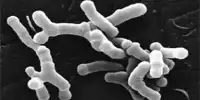Increasingly powerful microscopes allow us to always see smaller objects below the size of a single atom. Many activities of life, of course, have escaped us, because the work of seeing destroys them. Now, a quantum microscope has proven that it is possible to go beyond what was thought when looking at living cells, and its makers are hoping to extend their proliferation even further. To look very small, we need to collect enough photons to create a clear picture. For some small objects, this can be done by lighting a large amount of light on them.
Warwick Bowen, a professor at the University of Queensland, told IFLScience that some microscopes illuminate their targets with lasers thirty times more intense than sunlight. The consequences are not difficult to predict when trying to study something as subtle as the interior of a house. Sometimes turning on lazy lighting for long periods of time and creating an image over time solves this – but it’s not a solution to moving targets. In addition, Bowen explained; “Some forms of photodamage depend on the whole illumination over time.” The use of fluorescent dyes or proteins is widespread, but there are fears that what happens in their absence may change.
Bowen’s solution is to use more integrated lighting, extract some sound, and so collect a sharper image for the same intensity. The concept was first used to improve gravitational wave detectors, but Bowen and colleagues first developed it when applied to living things or parts of it. Bowen announced early success in the journal Nature, creating a 35 percent clearer picture than using established techniques. He told IFLScience, “Thirty-five percent is nothing, but it’s not too big. Probably a factor as to why they’re doing so poorly.” However, Bowen has improved 30-fold transparency of similar approaches to other fields and is hopeful it will “consume” light more effectively to do something similar.
This allows many subtle processes to survive such a reduction in the intensity of light, allowing us to see them in real time. Getting there in a league can be very ambitious, but Bowen told IFLScience that his next project should be to try to build a microscope that requires 10 times less illumination than the existing part.
Increasingly powerful microscopes allow us to always see smaller objects below the size of a single atom. Many activities of life, of course, have escaped us, because the work of seeing destroys them. Now, a quantum microscope has proven that it is possible to go beyond what was thought when looking at living cells, and its makers are hoping to extend their proliferation even further. To look very small, we need to collect enough photons to create a clear picture. For some small objects, this can be done by lighting a large amount of light on them.
Warwick Bowen, a professor at the University of Queensland, told IFLScience that some microscopes illuminate their targets with lasers thirty times more intense than sunlight. The consequences are not difficult to predict when trying to study something as subtle as the interior of a house. Sometimes turning on lazy lighting for long periods of time and creating an image over time solves this – but it’s not a solution to moving targets. In addition, Bowen explained; “Some forms of photodamage depend on the whole illumination over time.” The use of fluorescent dyes or proteins is widespread, but there are fears that what happens in their absence may change.
Bowen’s solution is to use more integrated lighting, extract some sound, and so collect a sharper image for the same intensity. The concept was first used to improve gravitational wave detectors, but Bowen and colleagues first developed it when applied to living things or parts of it. Bowen announced early success in the journal Nature, creating a 35 percent clearer picture than using established techniques. He told IFLScience, “Thirty-five percent is nothing, but it’s not too big. Probably a factor as to why they’re doing so poorly.” However, Bowen has improved 30-fold transparency of similar approaches to other fields and is hopeful it will “consume” light more effectively to do something similar.
This allows many subtle processes to survive such a reduction in the intensity of light, allowing us to see them in real time. Getting there in a league can be very ambitious, but Bowen told IFLScience that his next project should be to try to build a microscope that requires 10 times less illumination than the existing part.















